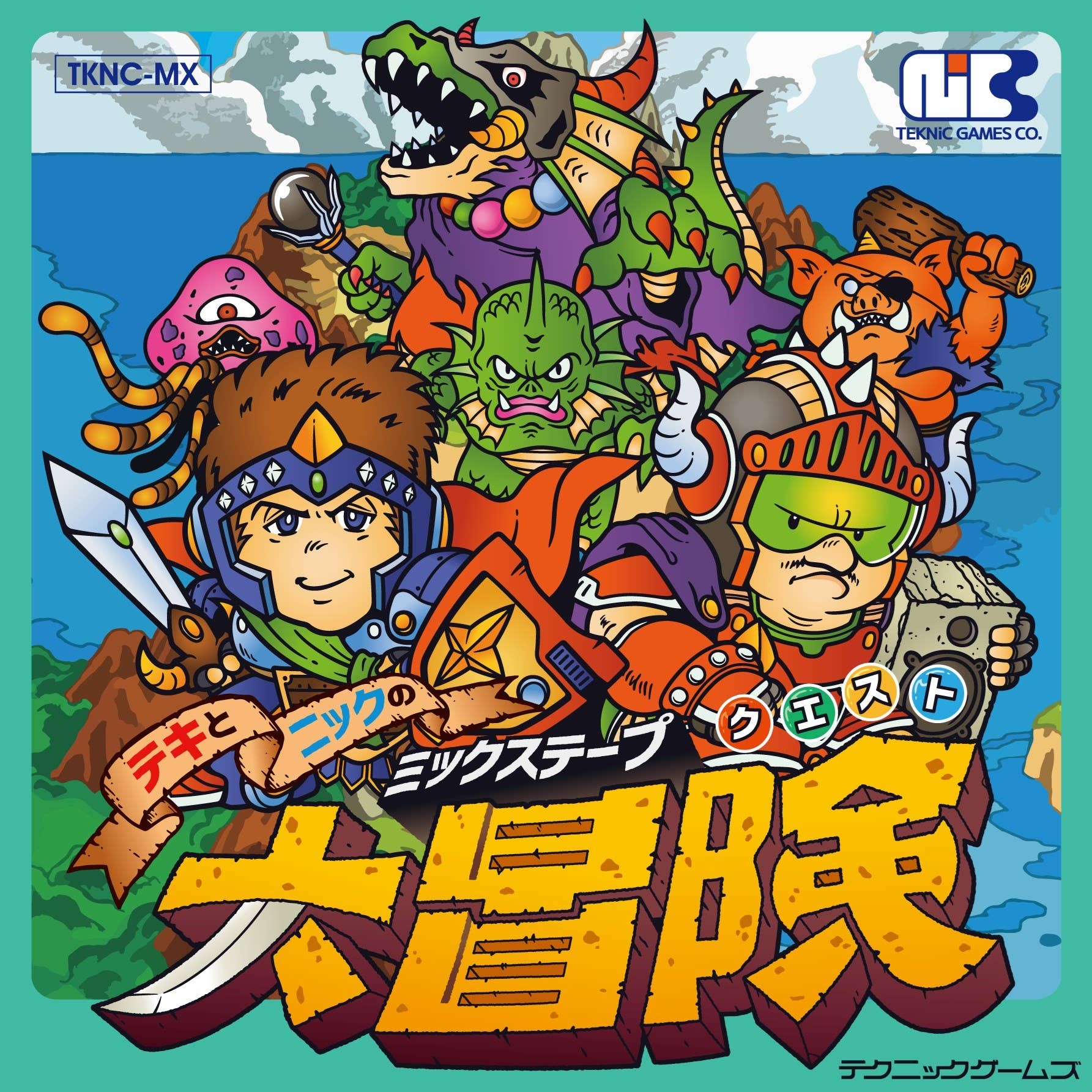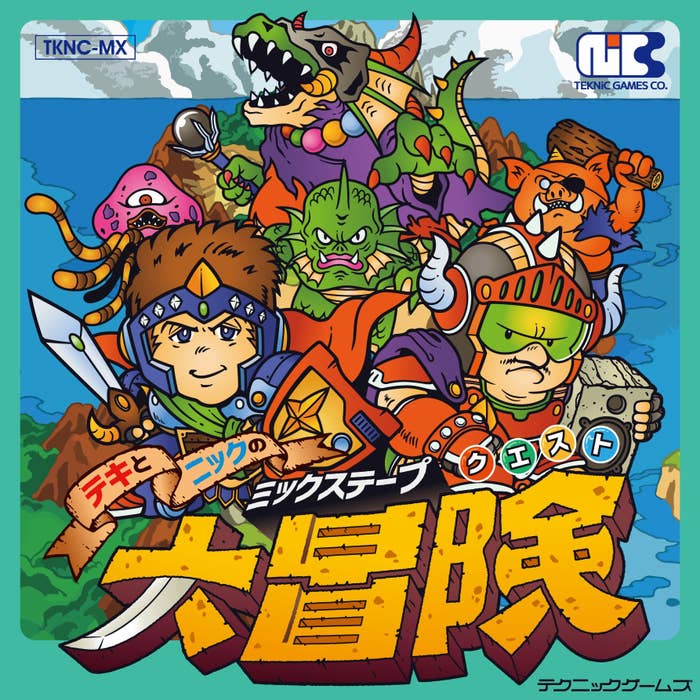
Growing up as an only child in the '80s, I learned early on that whole entire afternoons could be swept up by immersing myself into the world of video games. To put it in context, I was the target age when the first Nintendo Entertainment System hit America, and never looked back; of course, I'd graduated to Sonic the Hedgehog on the Genesis and, later, fell in love with many iterations of Sony's Playstation console. Spending hours discovering hidden areas and defeating boss levels not only made my eyes hurt and my stomach grumbles, but they also engrained the music of these games—especially the 8-bit and 16-bit era of video game music—into my brain. As I got older, that love for electronic melodies turned into a love of dance music, but also just an appreciation for genres like chiptune, which utilized those soundcards and vibes in exciting new ways. I bring all of this up to say that when France's Teki Latex—aka the King of the Blends—let me know that he'd been working with Nick Dwyer, who was the MAN when it came to knowledge on classic gaming and the music that consumed these games, on a mixtape that married their worlds, I was all set to Press Start and embark on their Mixtape Quest Adventure.
Released earlier this month, TEKI AND NICK'S MIXTAPE QUEST ADVENTURE isn't just their favorite themes thrown into a file for an hour-plus; it's an entire world unto itself. If you grew up reading the manual for games like the original Super Mario Bros., which understood its world and those who inhabited it, that's the vibe I got when seeing the time and care these two put into the project. Not only did they get original art from Hujikopro and Takakura Kazuki to give the visual side of the project a real throwback feel, but they also secured original tracks and remixes from the likes of Hyperdub head honcho Kode9, Ikonika, Mumdance and Foodman, as well as vocals from Jammz and ShiShi Yamazaki. The project finds a way to bridge the gaps between artists like DMX and the sounds of Sonic the Hedgehog, Chrono Trigger, and other iconic video game soundtracks in a way that speaks to an adult who spent his childhood blasting music out of a stereo while trying to blast bad guys out of the sky in my favorite video games.
Due to the different timezones we reside in (and, eventually, the isolation the rest of the world is currently being asked to undertake), I spent some time trading emails with Nick and Teki about their friendship and relationship explorers of gaming sound, the process of assembling this massive project, and the bevy of inspirations that they culled from to bring this mixtape to life. Strap in, press play on the mixtape, and dive into the expansive side-scrolling world of Teki And Nick's Mixtape Quest Adventure!
I know you two have performed before, and are obviously massive fans of video game soundtracks, but can you walk us through how the idea for this particular project came together?
Teki Latex: I was a big fan of Nick's Diggin' In The Cartsdocu-series, as well as his podcast. I remember listening to Mumdance giving his 10 favorite video game OSTs on the podcast and immediately thinking "I wanna do this!"—like immediately being reminded of tons of music from my childhood [that] I wanted to share and re-explore. So I hit up Nick on Twitter and he said, "OK let's have you in the next season". A few months later he asked me to participate in the Paris show of his Diggin In The Carts tour alongside Streets of Rage's Yuzo Koshiro and Kode9, and we had so much fun playing back to back together at this party we immediately knew we had to transform this into a project of sorts. I think Nick's super well-curated archeological selection in the realm of video game music and my style of club DJing focused on blends and superimpositions really complemented each other.
Nick Dwyer: The Diggin' In The Carts series evolved into a radio show, and then I worked with Kode 9 (from the UK label Hyperdub) on a compilation and off the back of that we started touring the project around the world with one of the headline performances being Yuzo Koshiro and Motohiro Kawashima performing Streets Of Rage live. Here’s their performance from the Paris show; this is the show that Teki and I played B2B at.
Going back a bit, Teki reached out to me on Twitter when the first season of the radio show played out and as he said was like "you need to get me on this, I have things to say." I knew who he was, of course, because I used to host an electronic music video show on a music TV channel in New Zealand throughout the 2000s and used to play TTV videos. I got him on the show and man, he delivered one of the best segments we had on the series. Just the genuine passion he had for the music but at the same time coming from it from an angle of someone who was deeply entrenched in the evolution of club music over the last two decades was the same angle that I was coming to this from and so, born out of a shared respect for these Japanese men and women who planted these wonderful things in our brains so young, a bond was formed. Skip ahead a few months and we’re playing this B2B set, playing video game music to a packed room of people and it felt fucking great. I think halfway through that set, something clicked and both of us knew that it was the beginning of something. And a year and a half later here we are.
A year and a half is a wild amount of time. I'd read that there was a massive amount of soundtracks that you went through. Was there a genuine theme or story that you two were trying to present with the tape?
Nick Dwyer: Yeah, between all of the research for the video series, the radio series and the Hyperdub compilation I can say that I’ve filtered through pretty much the entire history of Japanese video game music up until about the PS2 era and that’s all the consoles, handhelds, and Japanese personal computer stuff. Around a quarter of a million tracks probably. I have filtered out a lot of the noise but with this mixtape we wanted it to be something really special and so I kind of ended up diving back down again into that Mariana Trench just in case there were things that had slipped through the cracks.
Both Teki and I had different things we were always going to bring to this; it’s like we’ve each got different attributes, stats and specials so because of that we wanted this mixtape to feel like some kind of two-player side-scrolling adventure with these characters tagging in and out battling through these different worlds and zones complete with mini-bosses, end-bosses, and bonus levels. But that only came after we started to exchange tracks back and forward and all the routines and sections that we’d done. Then slowly we started to get an idea of what we were building and what this could be.
Teki Latex: It was one-and-a-half years on and off, though, and it was really great to be able to take our time creating this thing without the hurry of sticking to whatever is current in dance music right now. It's a different type of project from the mixtapes I usually work on, or the radio shows I make. It exists a little bit outside of the club music timeline.
Time is a flat circle anyway and that notion also goes together with the fact that we're getting a (relatively) new MC like Jammz to put vocals on a track from a Commodore 64 video game that came out in 1986 and which sounds like modern weightless grime. If we're telling a story with this mixtape it's really the idea that electronic music was a revolution that started about 35 years ago simultaneously in clubs and in the world of video games.
I'll add that the one-and-a-half-year [time period] also gave us time to really find the right person (Hujikopro) to create a very detailed and brilliant artwork, and then a different person (Takakura Kazuki) to create a fake screenshot of a game that doesn't exist, adding to the coherence of the whole thing. And also giving us time to really tease the project by unveiling tiny pieces of artwork one after the other until the release date.
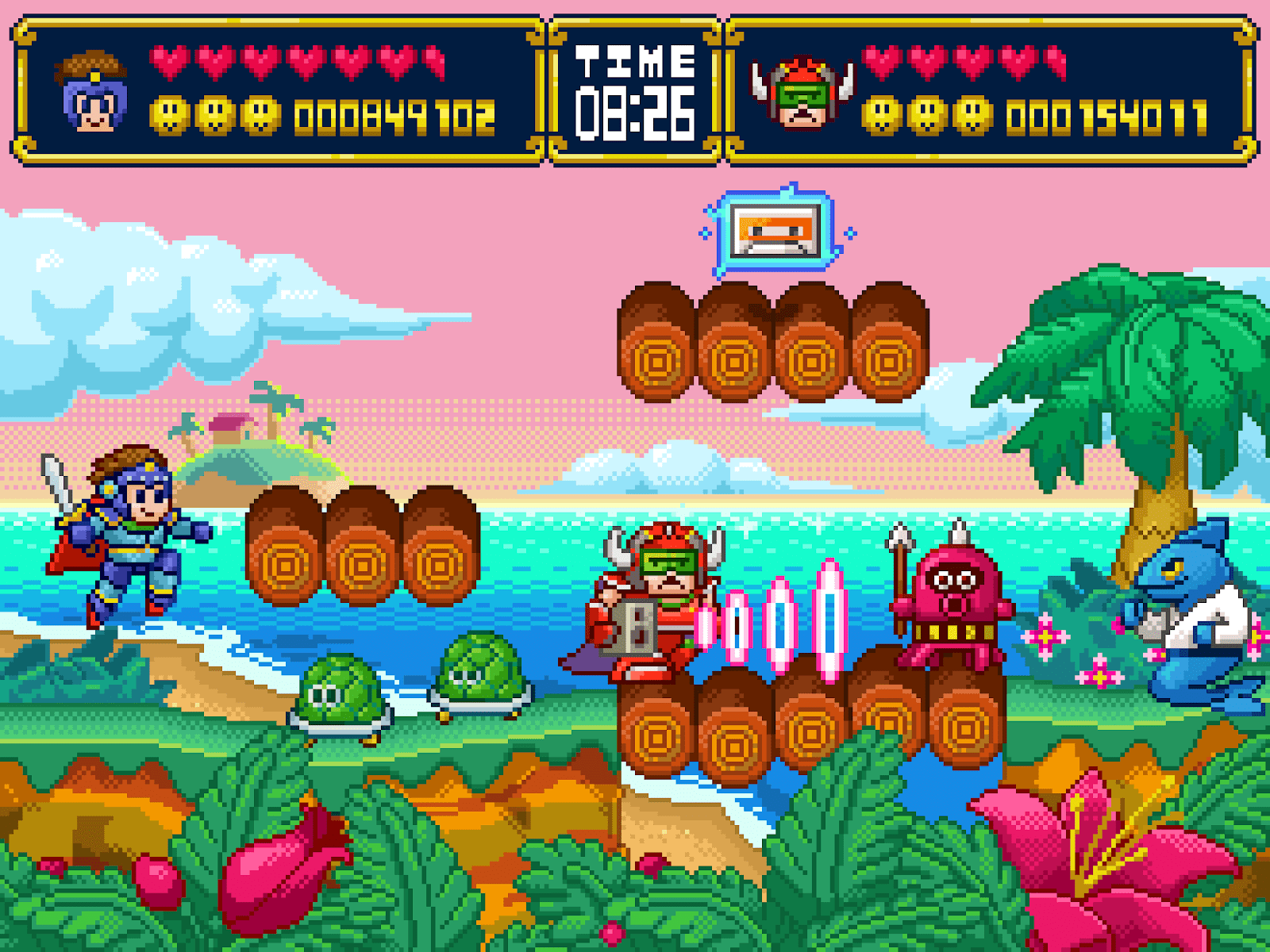
I think Nick happened onto something there. After the first time I really sunk my teeth into the tape, I had a similar sentiment that I shared with Teki; this definitely feels like there was a natural progression, sonically—once you really get into the thick of it (aka when the GRIME section begins), you feel like you've traversed through a side-scroller and entered the final boss fight. Did those vibes ever come out during the construction of the different sections and sequences involved in the tape?
Nick Dwyer: Yeah, absolutely! I mean, everyone is open to interpreting the journey as they hear it but there’s definitely a storyline evolving there for sure, whilst also running through an evolution of the machines and their sonic capabilities. There’s some boss battle going on for sure in that section you mention! It’s funny you picked it because that section started off as—and I know I’m gonna sound King Otaku here—wanting to do a tribute to the Capcom CP System soundchip and its relationship to, in particular, grime.
Basically, that CP System was the arcade system board that Street Fighter II was produced on and so that sound palette is just so recognizable to a whole generation. Like even if you’ve never played those other games or heard those tracks before, you feel them because that sound palette is built into anyone who ever walked three kilometers to play Street Fighter at their local dairy (we call combini/convenience store/corner stores dairies in NZ). Out of all of the sound chips those Capcom sounds from that board, that era, just hit me hard. There’s a (Street Fighter II composer) Yoko Shimomura track from this game Nemo (not that Nemo) that’s in that section that is basically an unreleased grime dub from 1990, it’s so fucking heavy. And yeah one of the first things that Dizzee Rascal ever sampled was the Chun-Li theme which Yoko Shimomura composed which we’ve also included. I started that section with the set-up and then Teki just took it to insane boss battle territory. Like that boss battle where you’ve killed him but then he does his full reveal and then you kill him again and then he comes back again as some fucking nasty biological freak of nature goliath spawn of hell all eyes and organs thing. But then you kill him and Missy turns up so it’s all good.
Shouts to Yoko Shimomura for planting seeds in a legion of future grime producers so many many years ago.
Teki Latex: Not to mention Dizzee and a number of early grime producers cut admittedly cut their teeth on the Music 2000 program for Playstation. As far as I'm concerned, grime is the music genre with the closest ties to video game music. Grime MCs were imitating Street Fighter and Mortal Kombat sound effects since Flirta D in 2003, JME was rapping over the Pokemon theme...there are so many examples.
When it comes to the mixtape being built like a video game itself, maybe it's not super clear cut but I definitely feel like there is a country level, a snow level, a desert level, a factory level and so on in the mixtape. The grime section is definitely the factory level. As much as I love bringing totally different styles together when I'm mixing, I always try to find common threads and moods between tracks in order for the mix to be fluid. Here we are skipping through BPMs within the tape but there are parts and sections that end up feeling like "worlds".
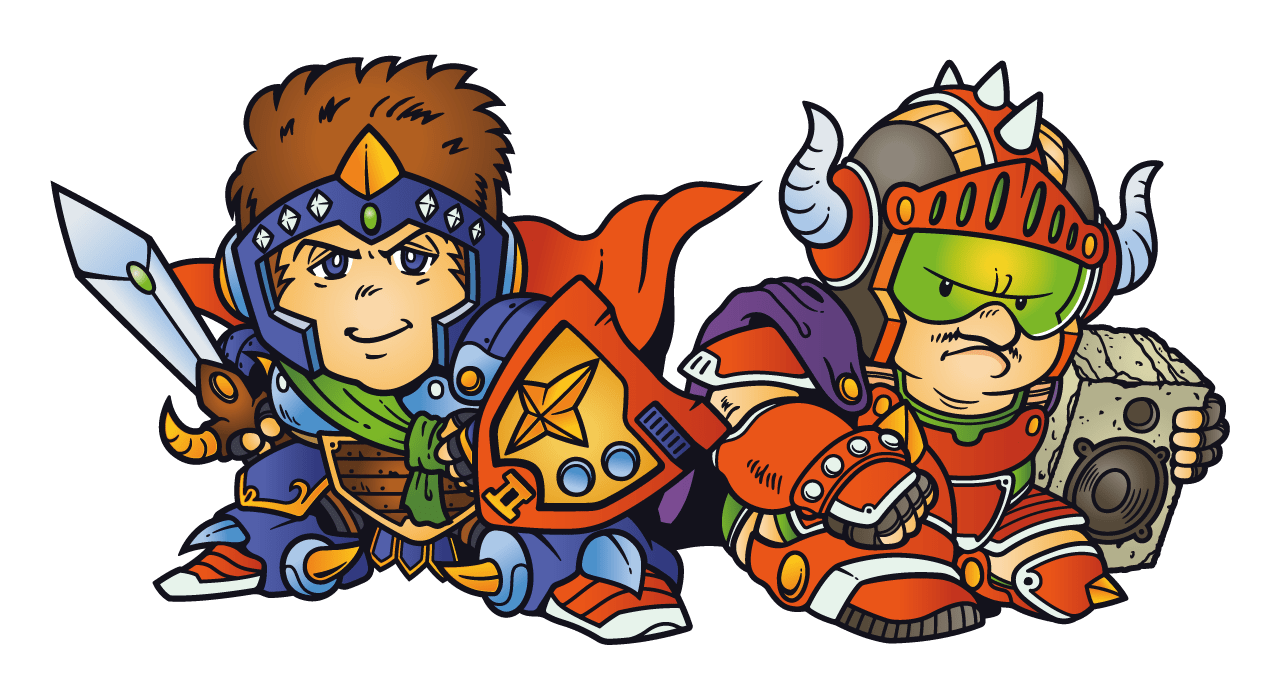
It's amazing to see how all of these different genres and sounds can spiral out of something everyone does, like playing video games. You'd mentioned the artwork; I remember being taken back to Toys R Us when looking at it. They used to have whole walls with images of the game covers up that I'd stare at for hours. Were there specific ideas you guys had for the cover art for this mixtape?
Teki Latex: I definitely had some specific ideas and I think Nick and I were on the same page. We knew from the start we wanted to imagine something that looked like box art for a non-existing game. I wanted to have loads of characters on the artwork, and to use a style of character design with very specific proportions called SD (for Super Deform), a very popular in the late '80s in Japan. They would take regular mechas from animes and make a cute version of it with sort of baby-square-toy proportions. So there was a game called SD Gundam on the GameBoy and I think Nick & I both played it in our youth. I remember buying it from an import shop on the strength of the cover art and then it turned out to be a super complicated strategy game all in Japanese it took me ages to figure out.
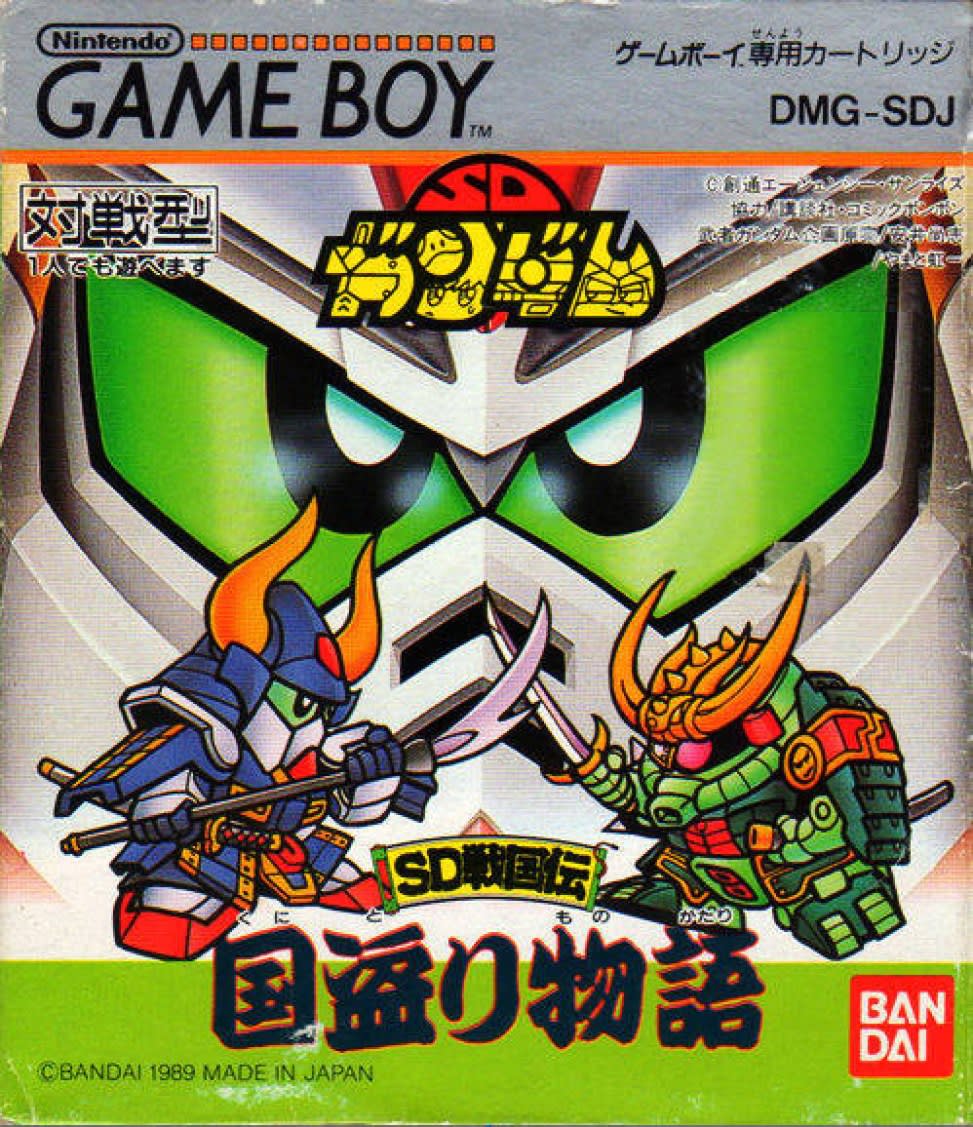
But like more generally, we wanted to channel the feeling of going to an import video game store and seeing all these Japanese games which names we couldn't even read with crazy colorful covers and super exciting designs. I have vivid memories of buying a semi-legal adapter to play Japanese cartridges on my French NES, and like, filing the sides of the cartridge slot of my Megadrive so that the bigger Japanese cartridges could fit (yes, that was a thing). I've always been obsessed with Japanese game aesthetics so we wanted to recreate that feeling, with the title in Japanese, and some of the visual influences were SD Gundam, Super Mario World, this Japanese SD trading card series called Bikkuriman, the Famitsu mascot, and this Megadrive game I was obsessed with Magical Hat No Buttobi Turbo Daibouken. With all that in mind Nick was like "ok I have the perfect guy" and he had found this amazing artist called Hujikopro who was totally on the same page as us and who seemed to be already drawing versions of SD Gundam robots in all sorts of settings.
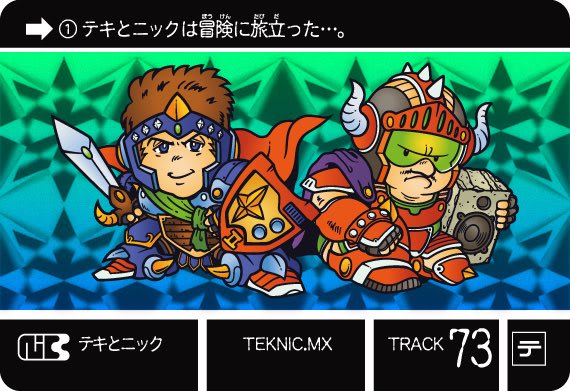
Nick Dwyer: For me, it was great to find out that Teki had that same connection to the artwork and the aesthetics as I did. I had a similar story. My entry point into video games was through the Commodore 64 that we had as a family computer when I was about seven, but ALL of our games were pirated. All of them. Our entire game collection was just hundreds of 5¼” floppy disks. That changed when my older brother moved to Japan and he bought and sent back to New Zealand a Japanese GameBoy and then the games started turning up, each boxed with incredible cover art, manuals and swimming in a language I couldn’t understand but fell in love with. The bold straight strokes of Katakana, the delicate script of Hiragana and then these insanely complicated Chinese characters. It just all looked so alien and so dope to me as a kid. Games like Castlevania, Gargoyle's Quest of course Super Mario Land. I used to pour over the box art and the manuals and just take in every little detail much in the same way you would pore over the liner notes and jacket covers of old record covers. Through those games, I got the key to this door that led me to the vibrant, technicolor world of Japanese illustration and design aesthetics. From there on every time a new game would arrive I was just as excited to get the box and its contents than I was about the game itself.
What was also happening at the same time for me was my older brother and sister were about ten years older than me and my other sister they had left home and so we had two empty bedrooms in our family house and so because of that Mum and Dad decided to get Japanese home-stays regularly and the young boys would always bring their manga, games and even those Bikkuriman stickers Teki mentioned. Through them, I learned so much about that world, and that SD style was across so much of that at the time (’91 / ’92). It’s like the home-stay thing was like this pre-internet Japanese soft power distribution network and those kids were like 12-to-14-year-old cultural ambassadors, spreading all this killer Japanese pop culture across the world and blowing all of our minds that this other world of games, music, art, and aesthetics existed. So yeah, we wanted to pay tribute to that feeling we all had as kids. Shout out to all those homestay kids for turning us all on to the realness.
The passion you two have for this is inspiring. I imagine you'd spent hours upon hours just bouncing ideas back and forth, and securing artists to make special remixes or allow you to drop exclusive material in a project like this can be a lot. Are there sequences or themes that you two came up with while brainstorming this project that didn't end up making the cut? Any producers you wanted to take a crack at these video game sounds that you couldn't nail down?
Nick Dwyer: We were really lucky in that we had a really clear idea of who we wanted to ask to be involved and they all said yes. We also wanted to keep the number of exclusives limited as, at the end of the day, we wanted the original music that those Japanese composers made so long ago to shine the brightest. In terms of sequences or themes, not really to be honest, through a process of really filtering through all of the music everything that we really wanted to put on the mixtape, ended up on the mixtape. Oh, apart from a routine that Teki wanted to do with Diplo’s "Diplo Rhythm" and the NES version of the Platoon music that Wes had sampled but in the end, it just clashed with the flow and wasn’t as fluid as it first looked on paper.
Teki Latex: I think that now that the mixtape is out I've got plenty of ideas for blends and things I would have done differently coming to mind, but overall I'd say the project reflects the plans we had in our heads pretty perfectly. Of course, we could have invited more artists to bring in exclusives but I'm happy with our decision to keep it in the family for the first one so that the world can hear what we are about. That way if we approach people from outside of our immediate circle when/if we ever do a follow-up up there will be something to show them.
Let's get JME over the Pokemon GameBoy theme for the next one!
What would you guys say was the first video game you truly loved, and how much did the soundtrack influence that love?
Nick Dwyer: We got a Commodore 64 in our house when I was about six years old and there was a game called The Last Ninja which was this isometric adventure game set in feudal Japan. It completely blew my mind. The graphics, the gameplay, everything about it was incredible, but especially the music. The soundtrack had such an impact on me as a kid that I would take my brother's boom box and record the music from the levels to tape and listen back to those tracks before I went to sleep. At times it was full of these rich melodic 8-bit takes on Japanese scales and traditional instrumentation and at other times it was so potent and so utterly, utterly dark. I think it was the first time that I heard pure anxiety and dread in sound and I was so drawn to that. I owe a lot to that game and that soundtrack. It was the reason why I got into electronic music and electronic sounds.
Teki Latex: I think The Legend of Zelda was the game I really fell in love with when it came out, and that music was such an important part of it. I remember there was also a whole mythology around the fact that the cartridge was painted in gold, and that you didn't need a password to record your progress in it because it included a "lithium battery". So it literally felt like we were putting our hands on a treasure "can you imagine this? A golden cartridge with a lithium battery", that was really something special. Everyone in school was talking about it and we were so hyped when it dropped. The game itself was, of course, a masterpiece and the music stayed with me until today. It always triggers crazy emotions and a feeling of epic adventure when I hear it.
Before that, there was the Goonies 2 theme on NES. The game kinda sucked (and was very very difficult—I don't think I went very far in it) but I would just put it on to listen to the incredible first level music. I was too young to watch Goonies in theaters when it dropped so I wasn't at all aware of the fact that said piece of music was just a (masterfully arranged) 8-bit version of Cindy Lauper's also wonderful "Goonies R Good Enough" from the movie until way later. But there I was, listening to it non stop and trying to reproduce it on my little toy synth. Now I love both versions equally, but in my mind it feels like the 8bit one came first.
Do you two pay attention to modern video game soundtracks? If not, why not—and if you do, what would you say are some of your favorites?
Nick Dwyer: In short, the answer is not really, but it’s mostly because I haven’t had the opportunity to dive in yet. For me, digging into video game music was an extension of what I’d been doing for more than two decades for work and passion, which was throwing myself into musical genres new and old, getting inspired by them and wanting to share those findings with people, be it through a DJ set, a radio show, a TV show or a documentary. From about the middle of the 2000s onwards, I was making a TV series about music culture around the world for the National Geographic channel which I hosted and we would film in countries like Brazil, Jamaica, Trinidad & Tobago, Ghana, etc, so I would just dive into genres like baile funk or soca or highlife and there would be periods where I would be doing nothing but listening to that one genre so that I could know them as best I could. When it came to doing the Tokyo episode of the TV show, I remembered all of the video game music that had such an impact on me as a kid that I had forgotten about and so we set-up interviews with Metroid composer (and GameBoy Sound Chip engineer) Hip Tanaka and Street Fighter II composer Yoko Shimomura. Meeting them—and in particular having my mind blown by Hip Tanaka when he was saying that all his mid-'80s Nintendo music was just him trying to emulate the music of Sly & Robbie—was a moment where I realised that there was something much deeper here and that’s what prompted me to really jump in.
I guess since then, through the Diggin’ In The Carts documentary series, the radio series and the Hyperdub compilation I had the opportunity to really go in on the entire output from the early '80s through to the end of the '90s (which are the eras for me where I feel that video game music was it’s own unique, wondrous and dazzling thing). We’d produced three seasons of the Diggin’ In The Carts radio series with Red Bull Radio and were lined up to keep the series going but sadly Red Bull Music Academy and Red Bull parted ways so Diggin’ In The Carts kind of got lost in the divorce. So yeah, I haven’t had that chance to dedicate the time to thoroughly dig into video game music from the modern era. I hope I do get that chance at some point but what I can say is, yeah for sure there’s a number of soundtracks that I’ve had the chance to check and that I feel stand up there with the music from the earlier eras that I love. Hyper Light Drifter and Fez both by Rich Vreeland, Undertale by Toby Fox, of course Katamari Damacy and Shadow Of The Collusus are killer but I’m not sure if they would even be considered modern now? Oh and the Futari No Fantavision soundtrack from Soichi Terada just because he is quite possibly the world’s greatest human.
Teki Latex: Well I'm not the big digger in this duo but of course I do come across certain things. All of the music in Super Mario Odyssey deserves all of the Oscars and the Grammies and is proper Spielberg-movie-level good. I've been ending sets with "Jump Up, Super Star!" and making blends with "Fossil Falls". As far as indie games go, "Pushing Onwards" from VVVVVV is an immense bop. Some other modern examples of 8bit hits are basically all of the Shovel Knight soundtracks including its DLCs by the master Jake Kaufman. As if "Strike the Earth! (Plains of Passage)" was not deliciously baroque, synth-metal and epic in itself, Jake cranked the awesomeness 1000 notches with his own remix of the same theme for the Specter Of Torment DLC. "From the Shadows (Plains of Passage)" just makes me cry every single time. So poignant, so powerful, so intricate and beautiful.

Are you two avid gamers now? Are there any games you're going to revisit or start now that everyone's confined to their homes for the time being?
Nick Dwyer: Man, I haven’t had a modern console in my house for about ten years and I think about getting one all the time, but I’m scared because I know what will happen. I came so close to getting a Switch when Breath Of The Wild came out but I just don’t know if I’m ready to open that portal yet because I know it will suck me in. Funny you mention self-isolation sessions though, as I’ve just set up the Super Famicom in my room and I’m eyeing up going back in on Chrono Trigger or Final Fantasy VI which will be decided in a coin toss once I’ve finished typing this sentence.
Teki Latex: I wouldn't call myself an avid gamer currently but I own a Switch. I wanna say that I'm finally gonna try to go past that damn elephant dungeon in Breath Of The Wild but the truth is, I find it very lonely playing games like Zelda. Right now, alone in my apartment while in confinement with all of France on lockdown, that's not what I need. I need my TV to be on all the time with the volume mad loud and to check my phone constantly to interact with friends in several group chats simultaneously and also maybe play Puyo Puyo on my Switch at the same time. I think during this period I just wanna play games that require simple actions as a form of meditation, games I can play mechanically while something is playing on the TV. It can't be hanging in the plains of Hyrule, I can't be fighting no zombies or walking alone in a donjon right now that would accentuate the feeling of loneliness, that's just not the vibe.
If you want to go on a magical (aural) adventure with Teki and Nick, their collaboration Teki and Nick's Mixtape Quest Adventure is available for free download via teknic.mx.

